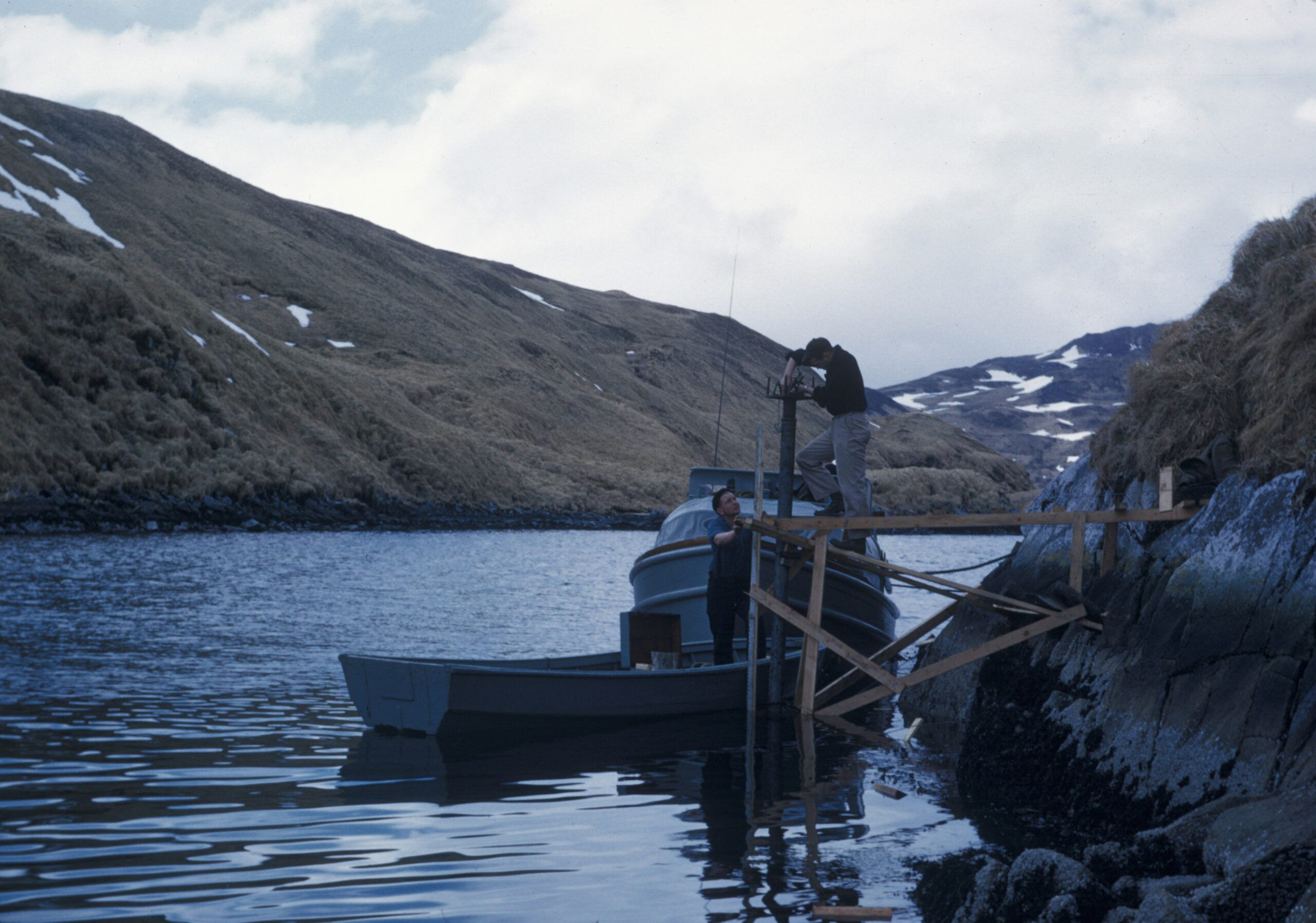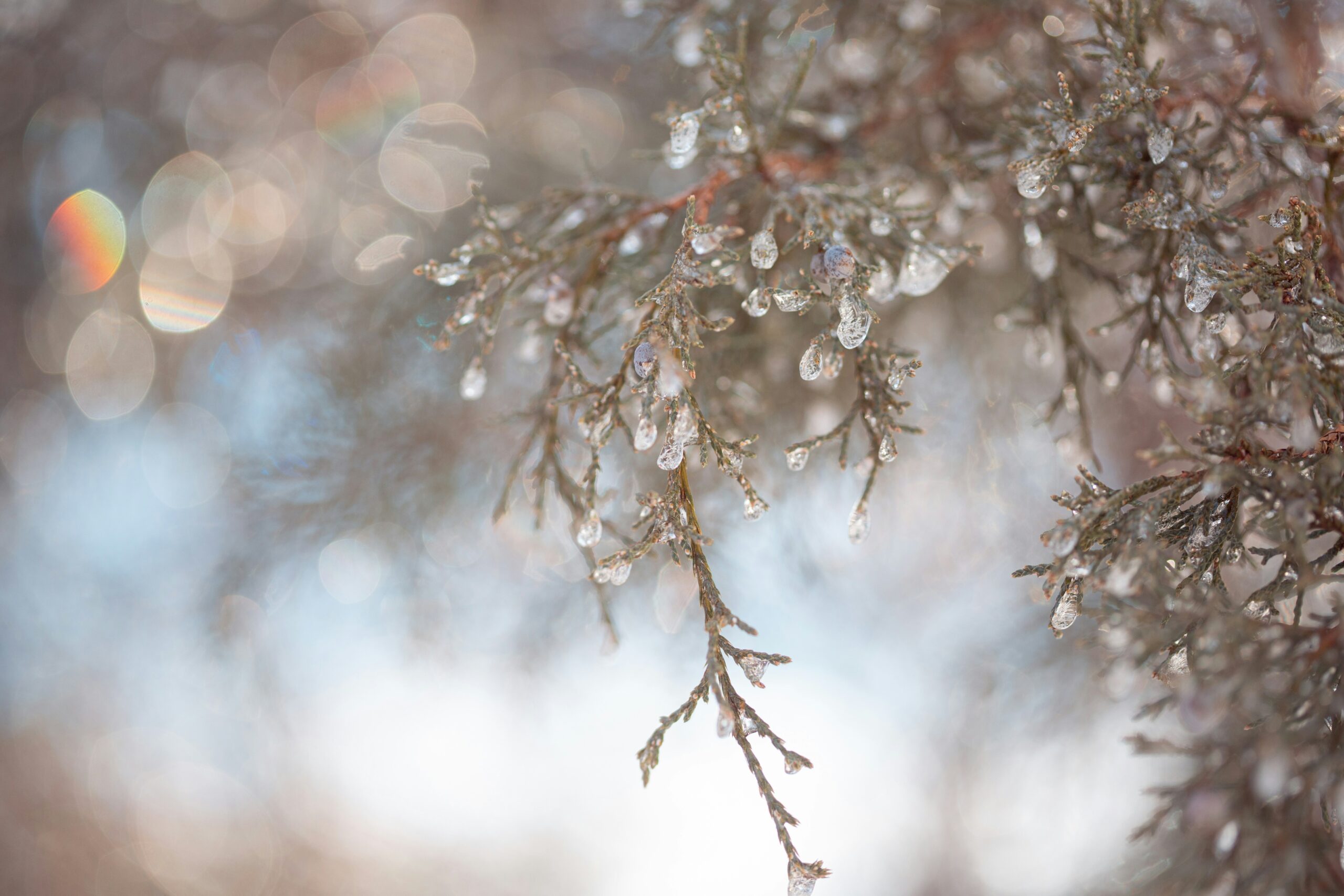What is Lake Effect Snow?
Lake effect snow is a meteorological phenomenon characterized by heavy snowfall that occurs when cold air moves over relatively warmer lake waters. This interaction between the cold air and warm water initiates a process that enhances moisture content in the atmosphere, leading to the formation of snow clouds. As the moist air rises, it cools and condenses, ultimately resulting in precipitation in the form of snow. The conditions necessary for lake effect snow development include a significant temperature gradient between the water surface and the overlying air. Generally, a difference of at least 13 degrees Fahrenheit (about 7 degrees Celsius) is conducive for conducive for this weather event.
The size of the lake plays a critical role in lake effect snow generation. Larger lakes can store more heat and moisture, which can result in sustained snowfall over a broader area. Furthermore, the temperature of the lake influences the intensity of the lake effect snow. Warmer water temperatures typically produce more intense bands of snowfall, as the increased thermal energy allows more moisture to evaporate and rise into the atmosphere. Conversely, as lakes cool down during winter months, the potential for lake effect snow diminishes.
Geographical factors, such as prevailing wind patterns, are also pivotal. When cold winds blow across the lake, they can transport moisture-laden air toward land, where it collides with colder air masses, promoting the heavy snowfall for which this phenomenon is known. Regions bordering the Great Lakes, for example, frequently experience lake effect snow due to the vast surface area and relatively warmer water of these large bodies of fresh water. The combination of these meteorological elements leads to localized and sometimes intense snowfall, creating unique weather patterns that can significantly impact travel and daily life in affected areas.
Why Are Lake Effect Snow Warnings Issued?
Lake effect snow warnings are issued primarily to alert individuals and communities to the potential for significant snowfall that develops in conjunction with large bodies of water, particularly the Great Lakes. This phenomenon occurs when cold air moves across the relatively warmer water, leading to the evaporation of moisture. As this humid air travels over the cooler land, it condenses and crystallizes into snowflakes, resulting in intense snowfall localized to specific areas downwind of the lake.
Several factors contribute to the issuance of lake effect snow warnings. The temperature difference between the lake water and the colder air masses is a critical element; greater discrepancies can lead to more substantial snowfall. Wind patterns also play an essential role, as they determine the trajectory of the humid air and the areas that will experience precipitation. Moreover, the terrain’s variation can enhance or diminish snowfall as the atmosphere interacts with local geographical features.
These warnings are crucial for public safety and infrastructure as heavy snowfall can cause hazardous driving conditions, leading to accidents and delayed transportation. They can also impact local services, such as emergency response teams, which may face challenges in reaching affected areas. Increased snowfall may overwhelm snow removal systems, potentially leading to power outages and road closures. Therefore, timely communication of lake effect snow warnings helps communities prepare for impending weather conditions, allowing residents to take necessary precautions, such as altering travel plans or increasing the readiness of winter equipment.
In summary, understanding the rationale behind issuing lake effect snow warnings is essential for individuals living in proximity to large lakes. Awareness of the factors influencing this weather phenomenon underscores the importance of consistent monitoring and preparedness to mitigate potential impacts on public safety and infrastructure.
Meteorological Indicators of Lake Effect Snow
Lake effect snow is a meteorological phenomenon that requires specific conditions to develop, and understanding these indicators is vital for accurate forecasting. Forecasters monitor several key parameters that provide insights into the potential for these snow events. First and foremost is the temperature gradient between the lake surface and the overlying air. A significant difference, typically around 13 degrees Fahrenheit (about 7 degrees Celsius) or more, is necessary for the formation of lake effect snow. When the air above the water is warmer than the lake itself, moisture begins to evaporate, setting the stage for precipitation.
Wind direction plays a crucial role as well. For optimal lake effect snow, the wind must be aligned with the long axis of the lake, allowing it to transport moisture-laden air over land. Predominantly, east or northeast winds off the lakes are necessary to deliver this moisture to the downwind locations. Forecasters utilize weather models to analyze prevailing wind patterns and predict the trajectory of this moisture-laden air. These models incorporate advanced technology such as Doppler radar, which helps track the speed and direction of wind flow, providing critical data for assessing potential snowfall amounts.
Additionally, humidity levels in the atmosphere are essential in lake effect snow forecasting. High humidity in the lower troposphere can enhance precipitation rates, leading to more substantial snowfall. Meteorologists closely evaluate humidity measurements at various atmospheric levels to sum up the conducive conditions for snow formation. By analyzing these meteorological indicators—temperature gradients, wind direction, and humidity levels—forecasters can effectively predict the occurrence and intensity of lake effect snow events, ensuring communities are informed and prepared for imminent weather changes.
Regions Most Affected by Lake Effect Snow
Lake effect snow primarily impacts areas located adjacent to the Great Lakes, particularly in the northern United States and parts of Canada. This meteorological phenomenon occurs when cold air moves over the warmer waters of these large bodies of water, resulting in significant snowfalls in nearby regions. Areas such as western Michigan, northern Indiana, and parts of western New York often experience the most pronounced effects. Cities like Buffalo, NY and Watertown, NY are notorious for their substantial snowfall amounts due to lake effect conditions.
The dynamics of lake effect snow can lead to dramatic weather extremes, with snowfall totals varying widely over short distances. For example, it is not uncommon for one town to receive just a few inches of snow while a neighboring town experiences a blizzard-like scenario with several feet of accumulation. In some cases, annual snowfall totals can reach upwards of 200 inches in areas directly downwind of the lakes, with certain communities experiencing snow just about every winter storm.
Statistics indicate that regions bordering Lake Erie and Lake Ontario are particularly vulnerable, with towns like Erie, PA averaging over 100 inches of snow each year. Furthermore, the frequency of lake effect snow events can often exceed 25 days per winter season in heavily affected regions. These snow events may come in cycles, with intense snow bands depositing incredible amounts of snowfall in a matter of hours.
Understanding which regions are most affected by lake effect snow is crucial for residents and travelers alike. Awareness of local weather patterns and forecasts can help mitigate the challenges associated with heavy snow, ensuring safety and preparedness during the winter months. Being informed about these geographical areas allows individuals to make better decisions regarding travel and outdoor activities while navigating the snowy months ahead.
Impact on Daily Life and Economy
Lake effect snow, a weather phenomenon that occurs when cold air passes over warmer lake waters, can significantly impact daily life in affected regions. Commuting becomes a critical concern as heavy snowfall can create hazardous road conditions. Many residents find themselves delayed or unable to travel, prompting local authorities to issue advisories or warnings. In extreme cases, this can include the temporary closure of major highways and secondary roads, making it challenging for individuals to reach their places of work or school.
School closures are another frequent consequence of lake effect snow. School districts typically assess weather conditions before making decisions, prioritizing the safety of students and staff. Snow days, while often welcomed by students, can disrupt educational schedules, leading to additional challenges in covering the curriculum. Moreover, the uncertainty of closures can complicate logistics for families, particularly those who depend on consistent routines for childcare and work commitments.
The local economy also feels the repercussions of intense snowfall attributable to lake effect conditions. Businesses may experience fluctuations in customer foot traffic; for instance, retail shops and restaurants often see a decline in patrons during periods of heavy snow. This unexpected downturn can result in lost revenue and potential financial strain for small businesses that rely on steady customer flow. Additionally, significant snow accumulation necessitates investments in snow removal services, further straining municipal budgets and diverting funds from other essential services.
Furthermore, the costs associated with snow management, including equipment maintenance and overtime for personnel, can add up quickly. Local governments must balance these expenditures with the need to maintain community services, often prompting discussions about resource allocation in the event of substantial weather events. In summary, the cumulative effects of lake effect snow deeply affect daily life and the economy, underscoring the need for preparation and resilience in the face of such weather challenges.
Safety Tips During Lake Effect Snow Events
Lake effect snow can lead to hazardous conditions, making it essential for individuals and families to prioritize safety when facing such weather warnings. One of the most critical aspects of preparation is driving. During lake effect snow events, road conditions can deteriorate rapidly. It is advisable to avoid travel unless absolutely necessary. If travel is unavoidable, ensure that your vehicle is winter-ready. This includes having a full tank of gas, proper winter tires, and an emergency kit containing items like blankets, food, water, and a flashlight.
Furthermore, it is important to stay informed about current weather conditions by regularly checking local forecasts and updates from weather services. In preparation for a potential power outage, households should keep batteries and charged portable chargers on hand. Additionally, consider storing extra heating sources such as space heaters and firewood, while ensuring proper safety measures to avoid fire hazards.
Families should also devise an emergency plan that includes designated meeting places and communication strategies, especially considering that power outages can disrupt phones and internet access. Moreover, it is beneficial to stock up on non-perishable food, water, and essential supplies to last through severe weather events. This level of preparedness can significantly ease anxiety and improve safety during lake effect snow occurrences.
To protect properties from heavy snowfall, homeowners should regularly remove snow from roofs, gutters, and driveways to prevent damage. Monitoring the accumulation is critical, as excessive weight can lead to structural problems. Using shovels or snow blowers safely helps minimize strain and injury. Additionally, clearing walkways promptly can prevent slips and falls, contributing to a safer environment during these extreme weather conditions.
Lake Effect Snow vs. Regular Snow: Key Differences
Lake effect snow is a meteorological phenomenon that occurs when cold air moves over warmer lake waters. This interaction causes moisture to evaporate and subsequently freeze, resulting in localized heavy snowfall. In contrast, regular snow is generated from broader atmospheric processes where precipitation develops in clouds through various mechanisms, such as temperature fluctuations and humidity changes.
One of the most significant distinctions between lake effect snow and regular snow is the intensity of snowfall. Lake effect snow can produce exceptionally heavy snowfalls over short distances, often leading to snow accumulations of several feet within just a few hours. For instance, regions downwind of the Great Lakes are particularly susceptible to this extreme phenomenon, with some areas reporting snowfall rates exceeding five inches per hour. On the other hand, regular snow typically distributes more uniformly across broader regions, resulting in more moderate accumulation rates.
Duration also plays a crucial role in differentiating these two types of snow. Lake effect snow may last for a short time but can lead to severe and sudden winter conditions. It is often intermittent and can vary greatly within short distances, meaning that two adjacent towns may experience drastically different snowfall amounts over the same period. In contrast, regular snow tends to persist longer, as weather systems develop over larger areas, maintaining steady snowfall for a day or more.
Geographical spread is another notable difference. While lake effect snow is localized, occurring specifically in areas adjacent to large bodies of water, regular snow can blanket vast regions, affecting multiple states or counties simultaneously. This geological reliance means that certain areas are more prone to lake effect snow events, thus influencing local preparations and responses to winter weather. Understanding these differences is vital for weather forecasting and preparedness during the colder months.
Historical Events of Lake Effect Snow
Lake effect snow is a meteorological phenomenon that has been responsible for some notable weather events throughout history, particularly in regions surrounding the Great Lakes. One of the most significant instances occurred in November 2014 when a powerful lake effect snowstorm struck the Buffalo area of New York, resulting in approximately seven feet of snow in some localized areas within a few days. This remarkable amount disrupted transportation, caused power outages, and ultimately led to several fatalities and numerous injuries as residents struggled to navigate the extreme conditions.
Another noteworthy event happened in January 1978, when the Great Lakes region experienced one of its most severe winters. The combination of freezing temperatures and moisture from the lakes resulted in intense snow squalls, causing extensive disruption across several states. In the aftermath, communities faced significant challenges as they worked to clear roadways and provide support to those stranded in their homes. The storm and subsequent cleanup showcased the need for improved forecasting and preparation for lake effect snow events, shaping the way local authorities issue snow warnings.
A more recent case occurred in early 2021, when parts of Michigan and New York were hit by a record-breaking lake effect snowstorm, with accumulations nearing five feet in some areas within just 48 hours. This event prompted officials to implement emergency measures, including snow emergency declarations, allowing for more organized responses from plow crews and emergency services. Such storms emphasize the necessity for communities around the Great Lakes to strategically plan for responses to lake effect snow and to educate residents on safety precautions during severe winter weather. These historical events illustrate both the unpredictability and potential severity of lake effect snow, reinforcing the ongoing need for precise weather monitoring and effective communication of warnings within affected regions.
Future Trends in Lake Effect Snow Patterns
As climate change continues to influence weather patterns globally, it is essential to examine the expected future trends in lake effect snow events. This phenomenon, primarily influenced by the presence of large bodies of water, is predicted to undergo significant changes due to rising temperatures and evolving atmospheric conditions. Research has indicated that warmer air and water temperatures may increase the moisture content of the atmosphere, potentially leading to more intense lake effect snowfalls despite milder winters.
One anticipated trend is an increase in the frequency of lake effect snow events. With warmer air carrying greater moisture, regions downwind of large lakes may experience heightened snowfall rates. However, shifts in prevailing wind patterns, which can be impacted by climate change, may also alter the location and intensity of these snow events. For instance, areas that historically harbored frequent lake effect snow may find themselves less affected, while others could see an uptick in activity. This variability underscores the complex interactions between temperature, atmospheric humidity, and wind currents.
Current research initiatives in meteorology are crucial for understanding these trends. Scientists are employing advanced climate models to predict how lake effect snow will respond to various climate scenarios. This research often involves long-term observation studies that analyze historical snowfall data alongside atmospheric conditions, allowing researchers to draw more accurate conclusions regarding future patterns. Additionally, the incorporation of new technologies, such as satellite measurements and improved weather forecasting models, further aids in understanding these intricate phenomena.
The implications of these evolving lake effect snow patterns extend beyond mere precipitation measurements. Increased snowfall could affect local economies, infrastructure, and ecosystems, reinforcing the need for continuous monitoring and adaptation to these changing weather dynamics. As we advance, understanding these future trends will be vital for communities prone to lake effect snow, ensuring preparedness for whatever climatic changes lie ahead.



